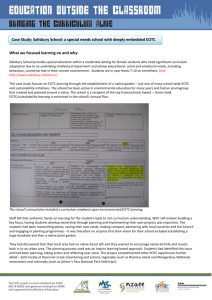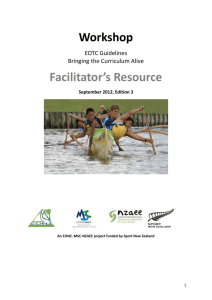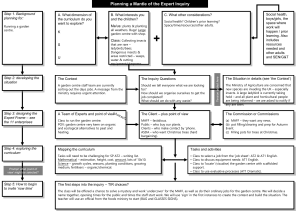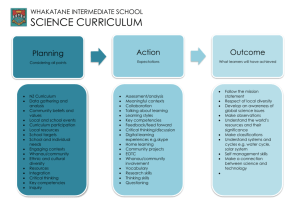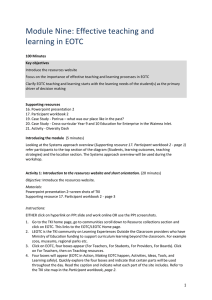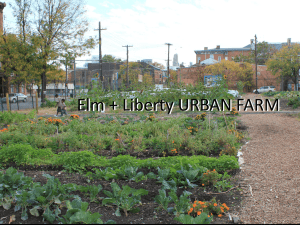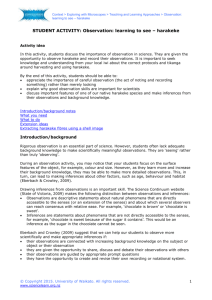Case Study - Salisbury School - native garden - EOTC
advertisement
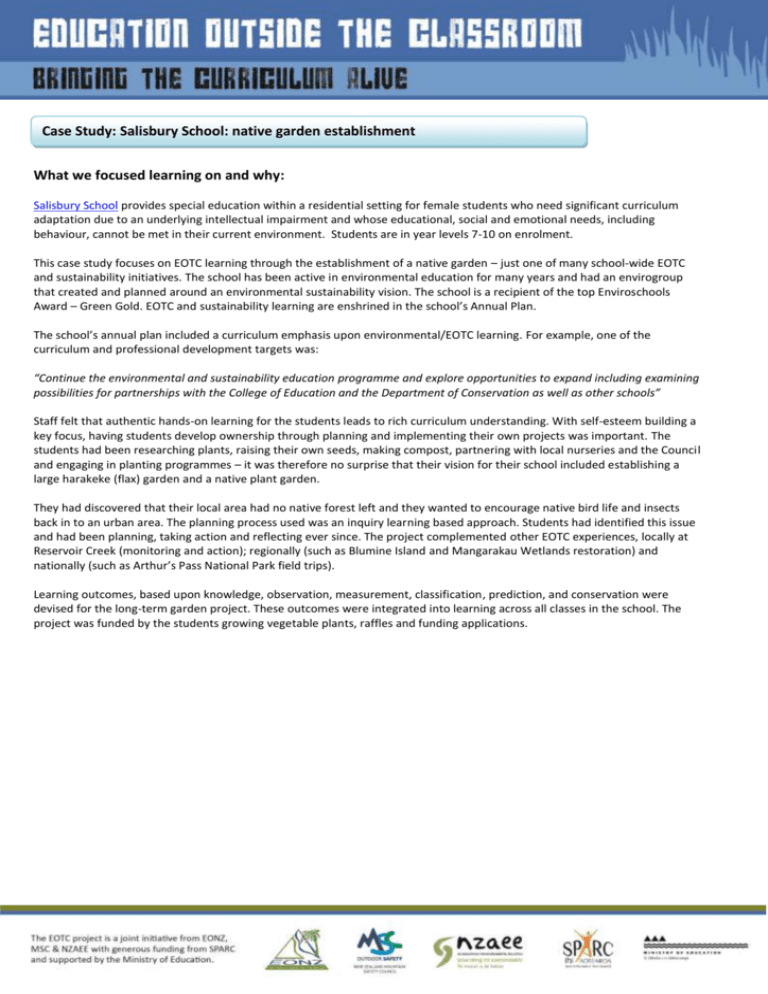
Case Study: Salisbury School: native garden establishment What we focused learning on and why: Salisbury School provides special education within a residential setting for female students who need significant curriculum adaptation due to an underlying intellectual impairment and whose educational, social and emotional needs, including behaviour, cannot be met in their current environment. Students are in year levels 7-10 on enrolment. This case study focuses on EOTC learning through the establishment of a native garden – just one of many school-wide EOTC and sustainability initiatives. The school has been active in environmental education for many years and had an envirogroup that created and planned around an environmental sustainability vision. The school is a recipient of the top Enviroschools Award – Green Gold. EOTC and sustainability learning are enshrined in the school’s Annual Plan. The school’s annual plan included a curriculum emphasis upon environmental/EOTC learning. For example, one of the curriculum and professional development targets was: “Continue the environmental and sustainability education programme and explore opportunities to expand including examining possibilities for partnerships with the College of Education and the Department of Conservation as well as other schools” Staff felt that authentic hands-on learning for the students leads to rich curriculum understanding. With self-esteem building a key focus, having students develop ownership through planning and implementing their own projects was important. The students had been researching plants, raising their own seeds, making compost, partnering with local nurseries and the Council and engaging in planting programmes – it was therefore no surprise that their vision for their school included establishing a large harakeke (flax) garden and a native plant garden. They had discovered that their local area had no native forest left and they wanted to encourage native bird life and insects back in to an urban area. The planning process used was an inquiry learning based approach. Students had identified this issue and had been planning, taking action and reflecting ever since. The project complemented other EOTC experiences, locally at Reservoir Creek (monitoring and action); regionally (such as Blumine Island and Mangarakau Wetlands restoration) and nationally (such as Arthur’s Pass National Park field trips). Learning outcomes, based upon knowledge, observation, measurement, classification, prediction, and conservation were devised for the long-term garden project. These outcomes were integrated into learning across all classes in the school. The project was funded by the students growing vegetable plants, raffles and funding applications. Learning outcomes for the native garden. As one application for funding stated: “The garden acts in the school as a learning setting, a teaching setting and a refuge for staff and students.” What we planned (focusing inquiry): The harakeke/native garden initiative was one of many arising from the students’ planning – and from passionately interested teachers. Envirogroup minutes reflected the extensive planning involved – students applied for funding, mapped out the location and carried out the construction. Planning was an integral part of the whole EOTC experience. Students were actively involved in all stages of their native garden – planning, doing, reflecting. Other projects involving extensive EOTC have been the establishment of worm farms, outdoor art, stream monitoring and restoration, - and further afield programmes such as establishing action projects on Blumine Island as part of the Untouched World sustainability programme, assisting in the restoration of Mangarakau Wetlands and many annual events such as Seaweek, Conservation Week and Arbor Day. What we did (teaching inquiry): Regular envirogroup meetings were held to plan the native garden. In-class learning complemented real-life projects outside the classroom. Students applied for funding, sought expert advice, visited nurseries and other native gardens, mapped out their garden, did the planting and construction and exhaustively documented their applications and meetings with hardcopies and photos and stored them in scrapbooks. Literacy and numeracy were embedded in this authentic EOTC experience. Language study based on plover visit to native garden Students constructing native garden Any EOTC experience should be deeply embedded in curriculum. The pa harakeke (harakeke world) met technology and social science objectives - for example, flax varieties suited to weaving were selected. Flax were planted that could be used for weaving; a technology objective. Partnerships were a key aspect of this EOTC/sustainability project. The flax garden involved linking up with iwi, Landcare Research and others involved in sourcing materials and assisting with planting. Harakeke blessing: students, staff and iwi were involved in the project. What happened (learning inquiry): Reflection for the students was vital, both during and after the project. It enabled plans to be modified and progress to be celebrated and documented. The teacher and students later saw opportunities to add to their project – through artwork, interpretation signs, the pou, and even an eco-hut. There was extensive feedback from those involved in the project. Reflection on the planting regime. Student reflection in scrapbook. A later project was to add an ‘eco-hut’ Safety and planning considerations: EOTC experiences of this nature falls into the activity type of ‘On-site – in the school grounds - lower risk environments (EOTC Guidelines, 2009, p. 26-27). This was an opportunity for students to empower their own safety and further learn valuable literacy skills. Students devised their own health and safety guidelines Check the requirements of your own school policies when planning such learning experiences. See the EOTC Guidelines, 2009 for further information. Further information, links and resources: EOTC Guidelines, 2009: http://eotc.tki.org.nz/EOTC-home/EOTC-Guidelines
